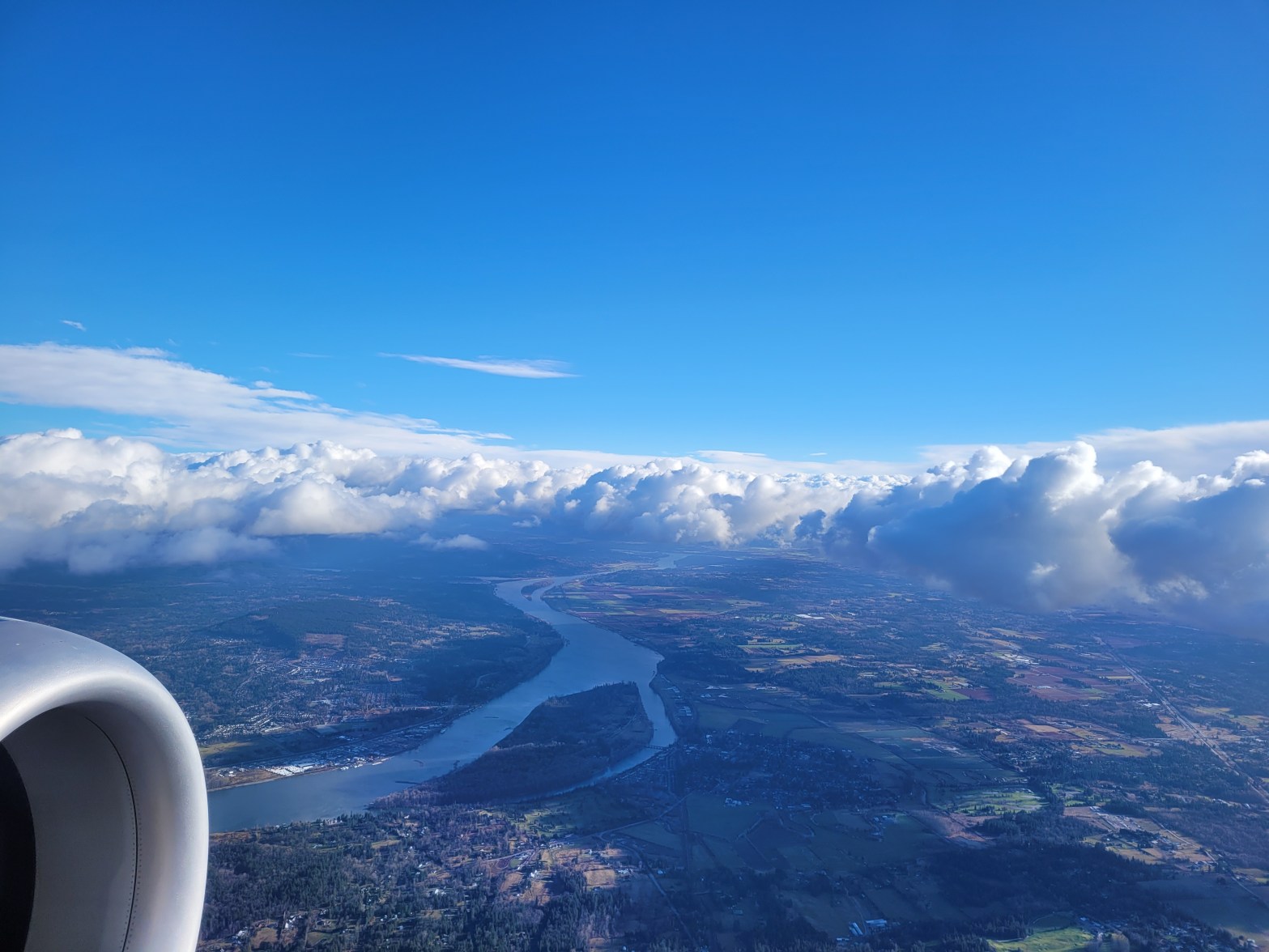With travel returning in 2022 and the Boeing 737 Max series aircraft back in the air, we had the opportunity to fly on the 737 Max aircraft of WestJet, Air Canada, and Flair. I’ve decided to pit the three airlines and compare them against each other. In addition to them, Lynx and Swoop (a subsidiary of WestJet that won’t be around for much longer) also fly the 737 Max series. Without a doubt this “controversial” aircraft is poised to be the most common site in Canadian skies in the coming decade.
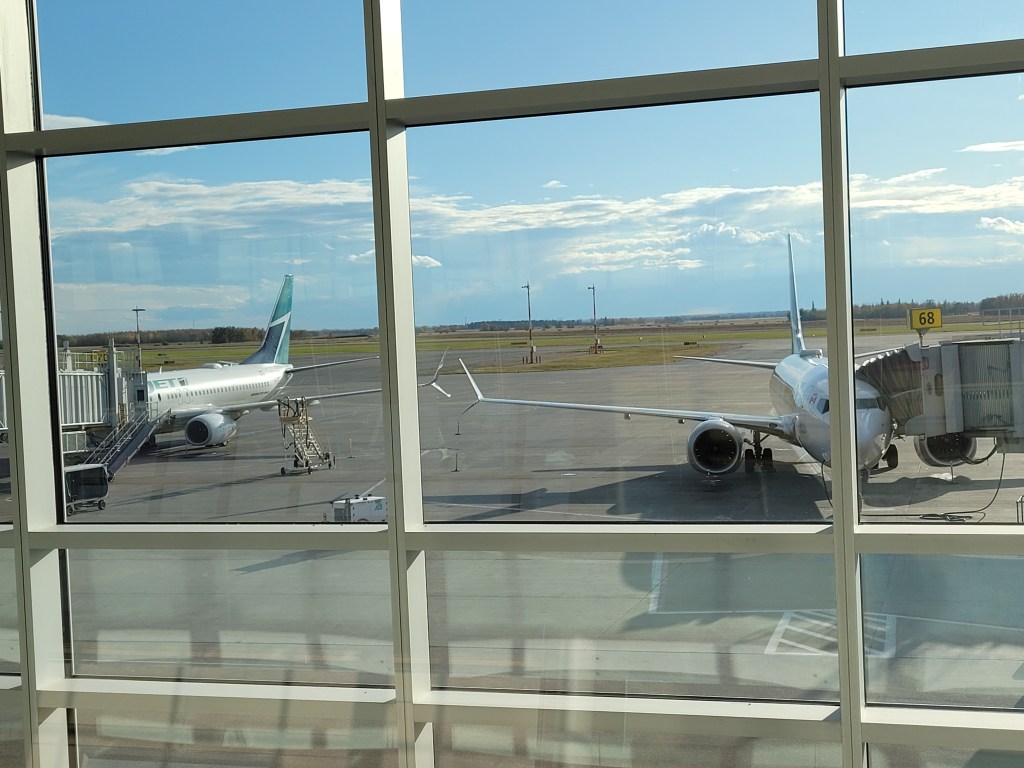
For those that are newer to the Canadian aviation scene, Flair is an ultra low-cost carrier (ULCC) based now in Edmonton. They operate an all Boeing fleet of mostly 737-8 Max and a few 737-800NG.

WestJet is a low-cost carrier (LCC) that started operations in 1996 and is today Canada’s second-largest carrier and is based in Calgary. It too flies an all Boeing fleet of various 737-series aircraft and the 787-9 widebody.
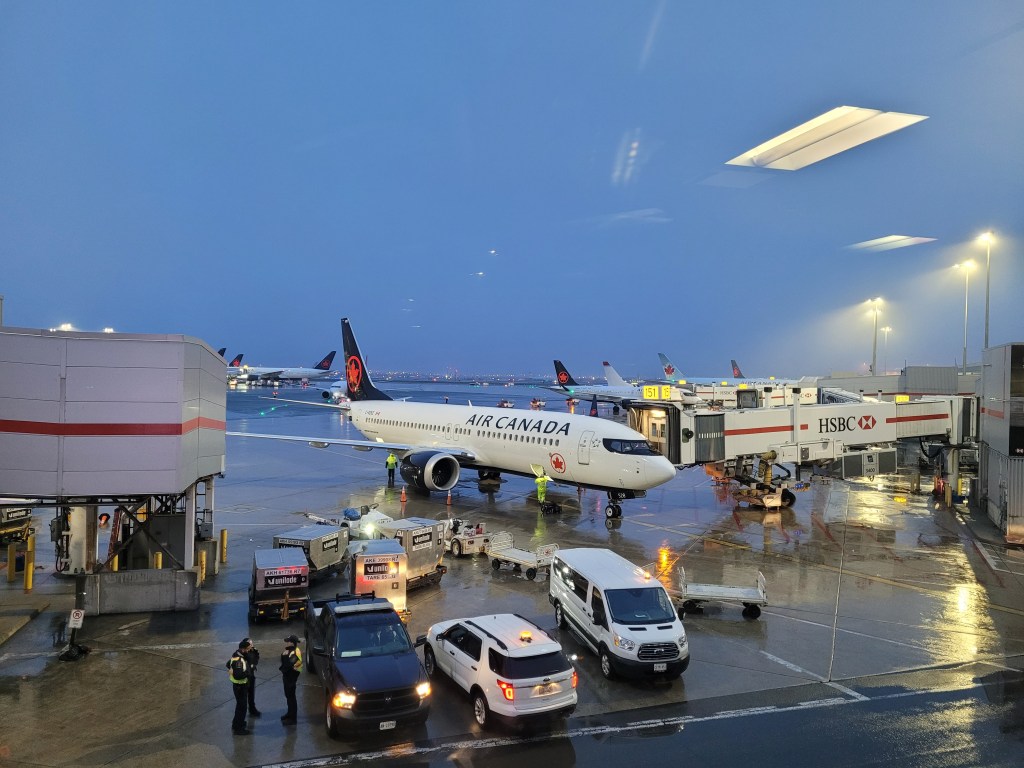
Air Canada on the other hand is the Goliath of the pack. It is Canada’s flag carrier based in Montreal, Quebec. It flies a large, diverse fleet, including Bombardier regional planes, Boeing wide bodies, and Airbus Narrow and wide body aircraft. Prior to the Boeing 737-8Max, it flew Airbus for many years as their narrow-body manufacturer of choice.
Background
The current series was announced originally in 2011 to replace the next-generation series 737’s. First delivery was in May 2017. In late 2018 and early 2019, the series was involved in two fatal accidents due to a failure in its Maneuvering Characteristics Augmentation System (MCAS) due, in part, to the failure of the single angle-of-attack sensor that lacked redundancy. I won’t allow politics into this discussion, but a failure of the flight crews to identify the problem and shut it down was also cited as contributing factors to the crashes.
Prior to recertification being granted, Boeing provided a software update along with adding redundancy to the angle-of-attack sensor to prevent a recurrence of these accidents from happening again. In the coming years once the -10 variant is certified, Boeing must also update the cockpit crew alerting system as well.
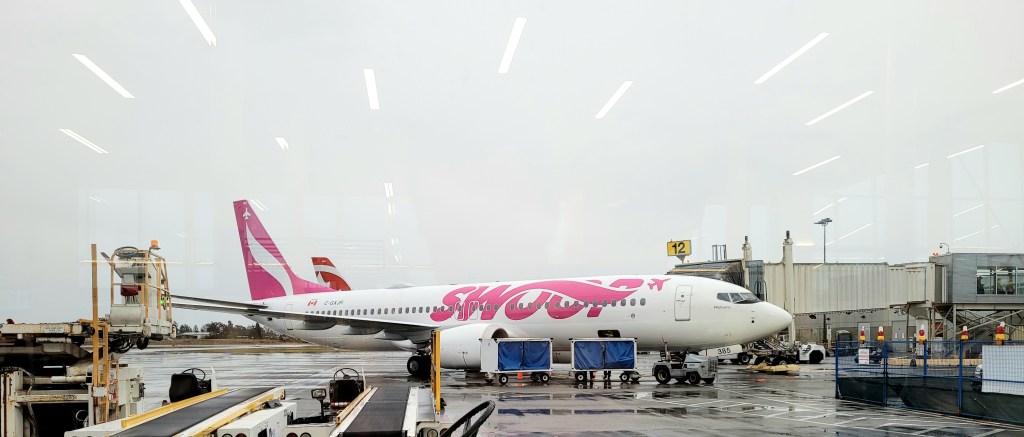
Since being reintroduced back into service, the type has safely flown millions of flight hours and is recertified in every major market globally. I have heard many say they will never step foot on a 737 Max ever again, which will be less possible as Air Canada retires their A320-series aircraft. However, what is now the most scrutinized aircraft in the sky, I have the utmost confidence in it and the crews that shuttle us from A to B. You see, aviation is as safe as it is because of lessons learnt from these unfortunate accidents, and the most dangerous part of flying is your trip to and from, the airport.
Unfortunately, I wasn’t planning on blogging as much back when we took these flights, so my available photos of the aircraft and interiors are limited.
Initial Impressions – Seats and Storage
Aside from individual liveries, the exteriors are all identical. 737 Max aircraft are easily identified from others by the “shark teeth” at the rear of the engine cover combined with the split symmetry winglets. On all the airlines, they had the same seatback pockets and seat width is pretty well the same too. Seat pitch in standard legroom is about 30″ on all three airlines which is pretty standard across many carriers. Extra legroom seats have about 34″ of pitch.
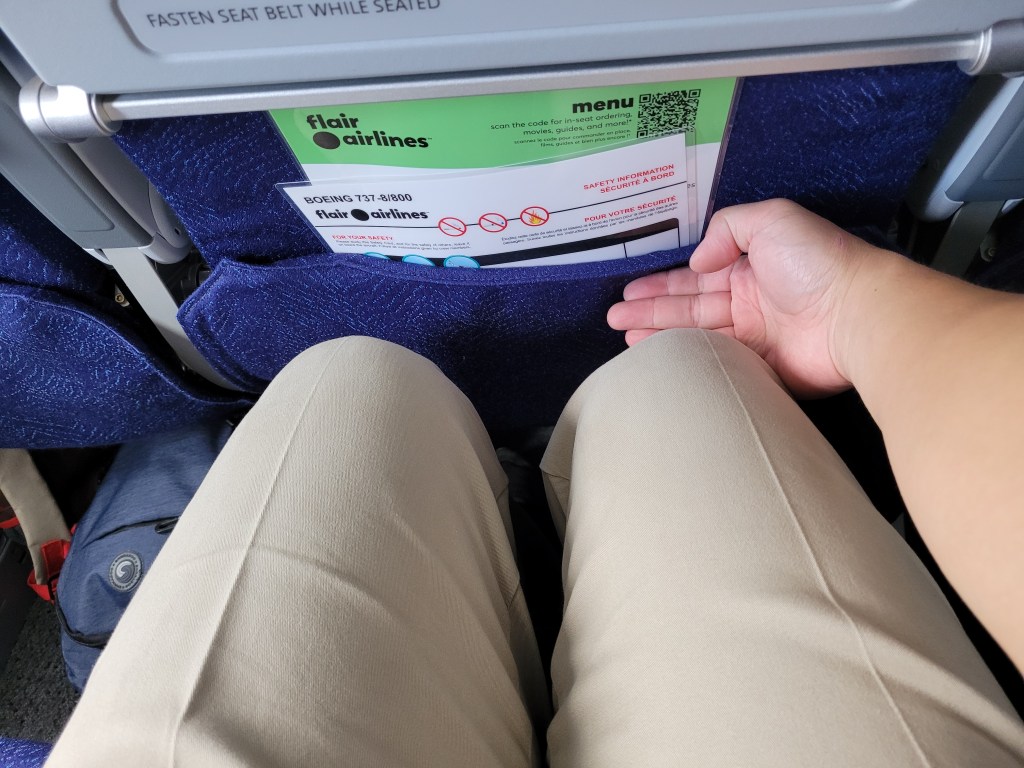

Stepping aboard WestJet (WS) aircraft, you’ll pass a 12-seat Premium class before entering the economy class. WS aircraft seat 174 in total, the 12 in Premium and 162 in economy class. The Boeing Sky Interior is installed, along with the new overhead bins that fit significantly more carry-on bags then previous generation aircraft, this is because it allows carry on rollers to sit on their side rather then flat.


The seats are upholstered in leather (pleather?) and have adequate legroom for the segments they fly, but for those who want a bit more, the first few rows are extra legroom seats that can be selected in advance for a fee. There are adjustable headrests and the seats recline about 3inches.
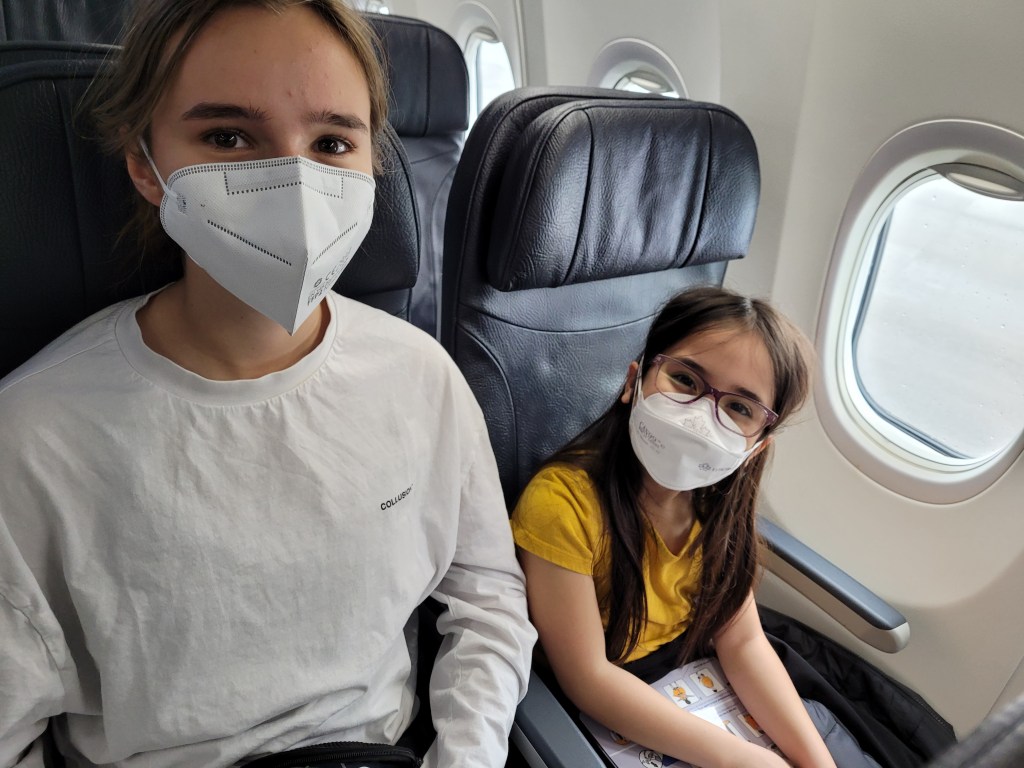

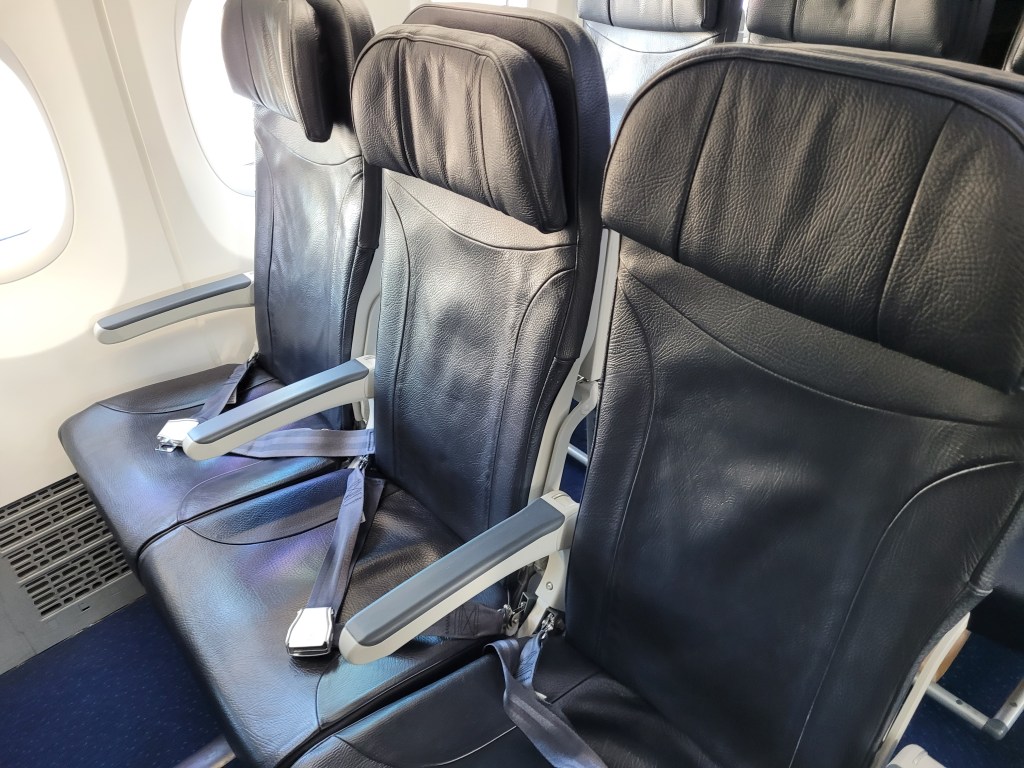
When boarding a Flair flight, you’re greeted with a 189-seat all economy layout. Interestingly, there are extra-legroom seats down just the right side of the first 9 or so rows, but on the left it is standard legroom seats. Not sure why the cabin was laid out this way, nothing wrong but it’s just odd the rows end up offset. The seats are upholstered in a comfortable blue fabric that I much prefer over the leather on WS. The seats have surprisingly good legroom from a ULCC, an unexpected fact that made the flight to 5hr Ottawa more comfortable.
You’ll notice there are no headrests, and the seats do not recline at all. While the Flair aircraft have the Boeing Sky Interior and the overhead lockers look the same, they are shorter and fit only what previous gen bins fit, roller bags flipped sideways will rotate, prevent the bin from closing.
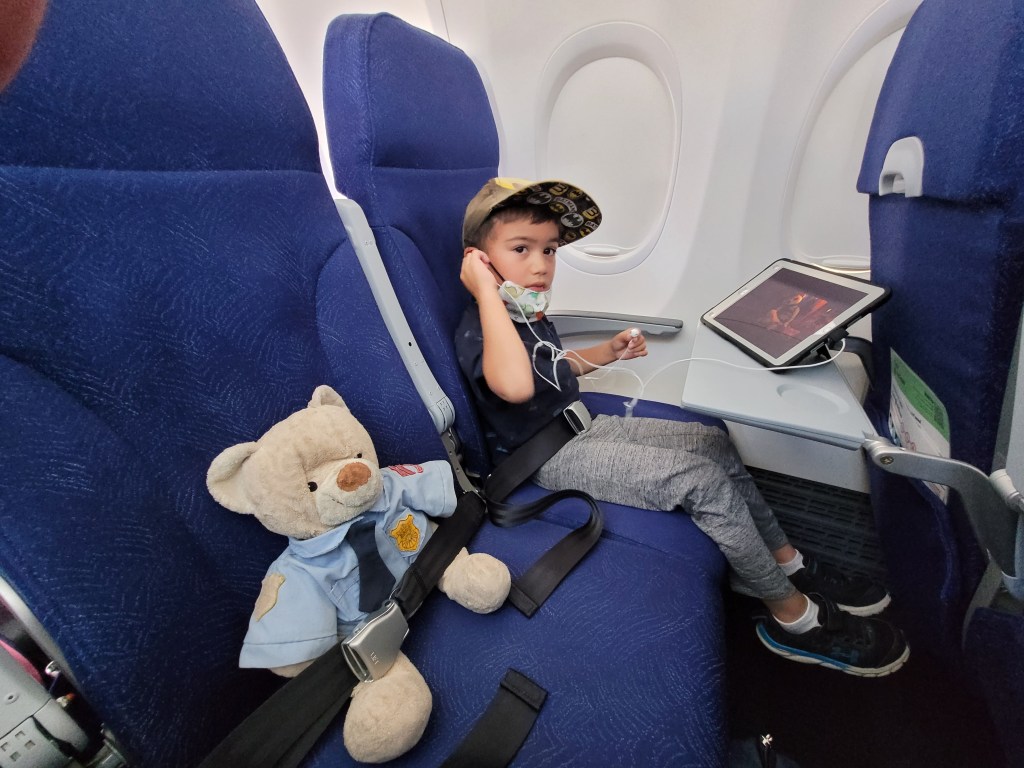
The clear winner in this category is Air Canada (AC). As you board, you’re greeted by 16 recliner-style business class seats, and 153 economy class seats for a total of 169 seats, the least dense of the 3 carriers. Black leather adorns the seats, equipped with seatback entertainment screens and fully adjustable headrests. The economy section is in your typical 3-3 configuration found on all carriers. At the front of the cabin, preferred seats are available for an extra fee that come with extra legroom and earlier deplaning. The overhead bins are very similar to WS, featuring Boeing’s Sky Interior with the larger bins, there’s even instructions to insert your roller bag and then flip it upright to get more bags in.

Comfort
For economy class, they’re pretty stock standard. All have approximately the same legroom and all use a slimline seat which is not the best for longer segments (some flights are over 6 hours). They also all feature individual air nozzles, and the cabin noise is noticeably reduced by the CFM Leap engines they utilize.
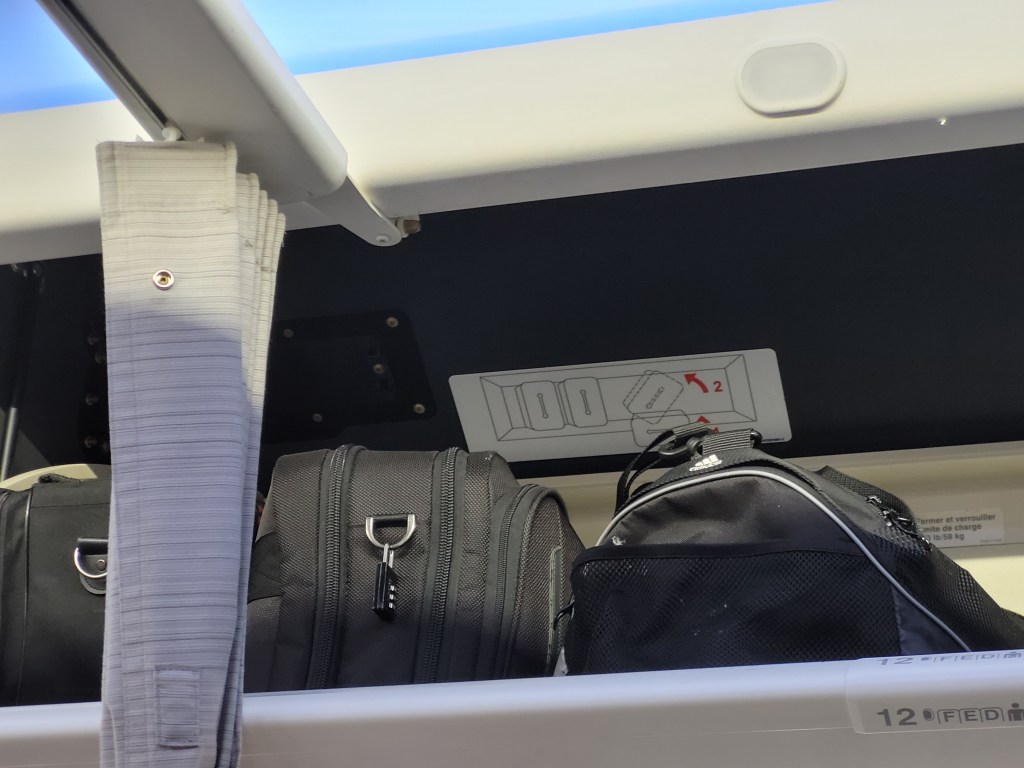
The slight edge here will have to go to AC as their slightly less-dense configuration combined with seats that can recline and the distraction of seatback IFE, all combine to make longer flights onboard a bit more comfortable.
Inflight Entertainment
WS’s app-based inflight entertainment works reasonably well, but I just personally prefer not being forced to use my own device for entertainment, especially given how much battery it uses. There are USB charging ports and shared 120v outlets, but they don’t always work well enough to keep a charge.

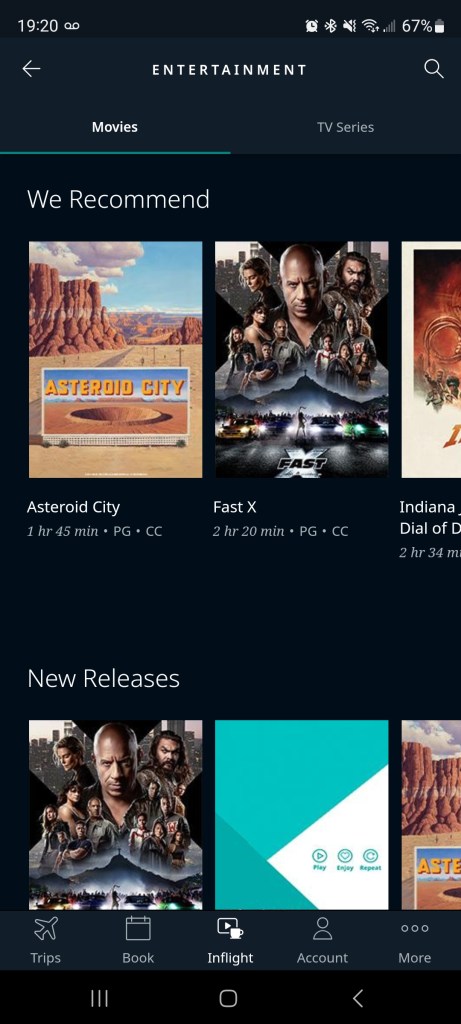
WestJet advertises they offer over 700 hours of content onboard. 
While Flair is developing an app-based inflight entertainment streaming program, it was not available on this or any Flair flight we’ve been on yet. So Flair will have to lose a point on this one.
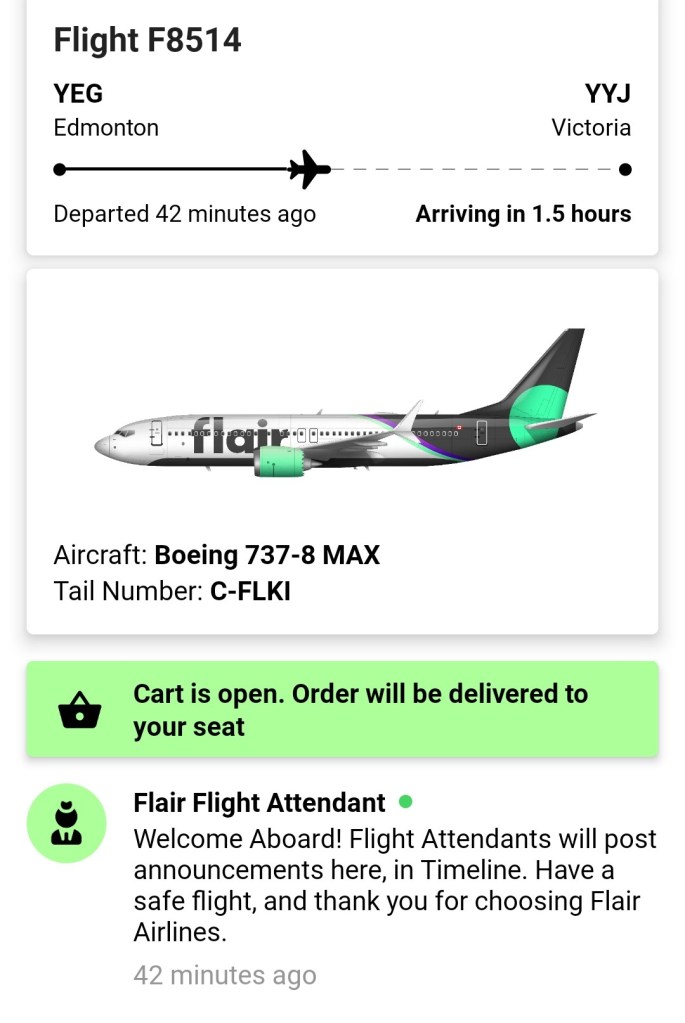
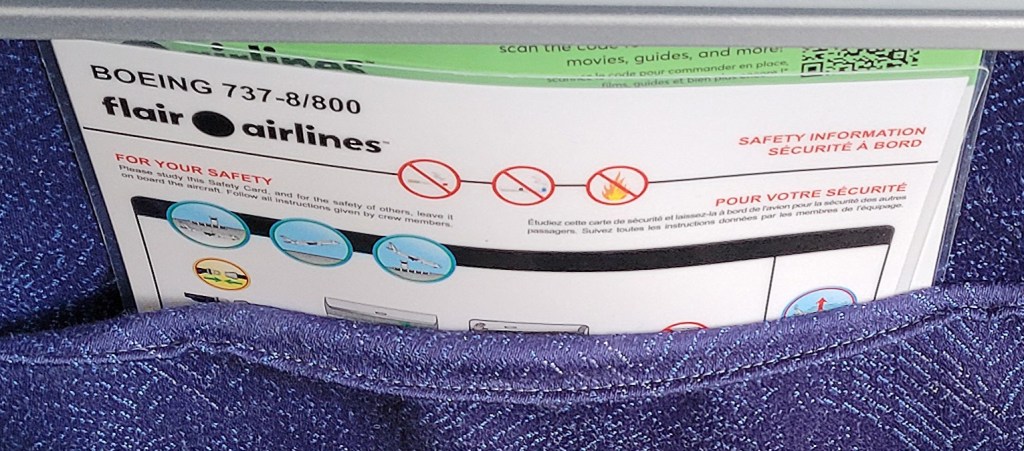
While WS also offers free inflight WiFi for those who hold the WestJet World Elite Mastercard, on a flight down to LA though, it was rather slow with a download speed of only 2-3mb/s, the edge here will have to go to Air Canada.
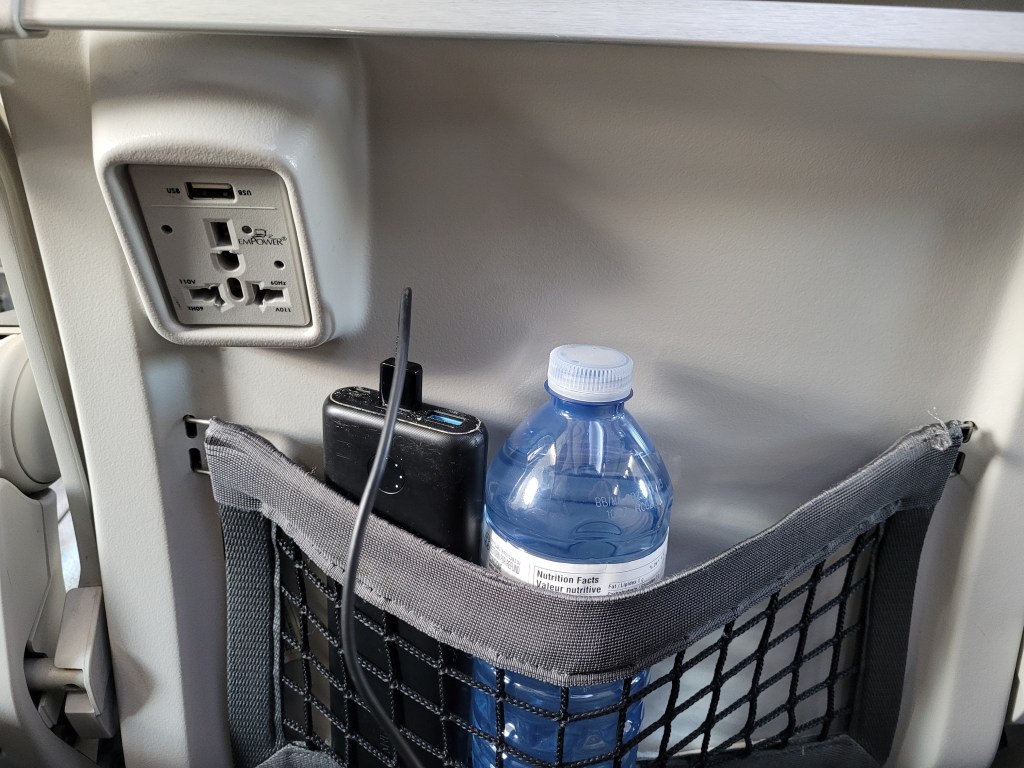
Air Canada’s seatback (or in our case bulkhead-mounted) IFE system is amazing. It has a tonne of choices, games, kids content, and is responsive and easy to use. Apparently the new systems are similar to an Android phone where the software can be easily updated, it’ll be interesting how this system ages compared to other Panasonic systems used on roughly 10-year old widebody aircraft or their 20-something year old Airbus’s.
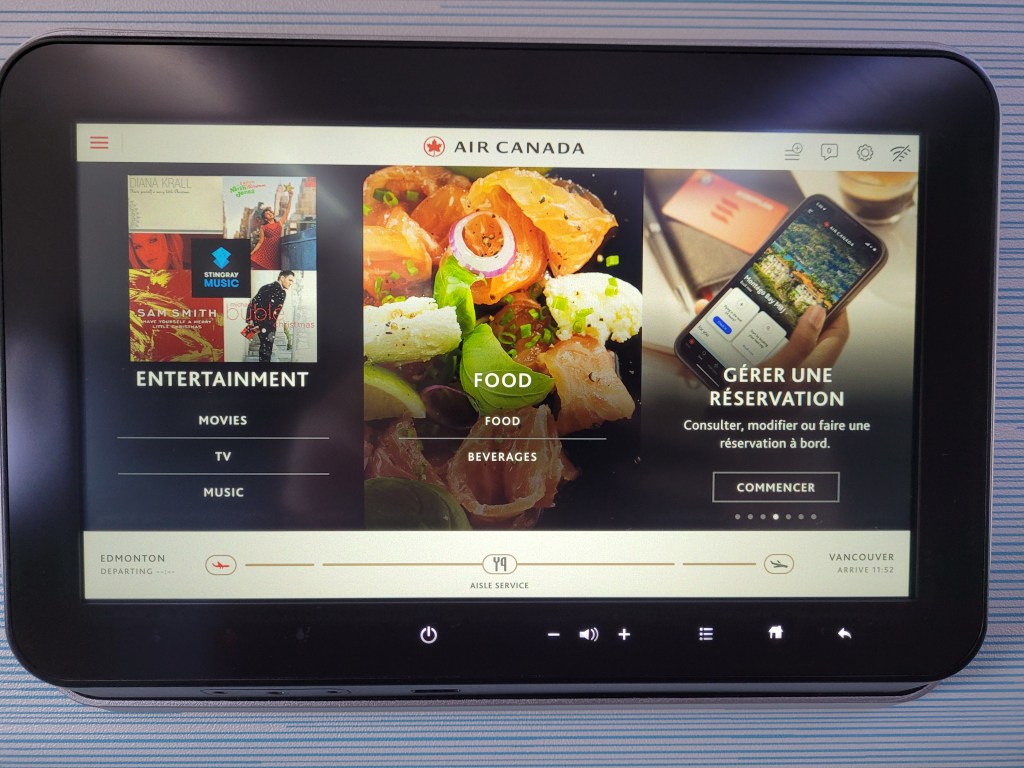
Inflight Experience
This will be a bit controversial and very subjective. The crews on all three airlines were overall good. I will note though that the Flair crew was a bit frosty to start, especially compared to the warm welcomes we received on WS and AC aircraft.

WS comes around with a buy on board service along with a drink service. I appreciate being able to have a few teas to choose from, or just getting a gingerale with a snack. I have found the buy on board to be quite inconsistent, but our flight lengths usually mean I easily survive without anything substantial. On our flight from Vancouver to Cancun though, only a beverage service was available with no buy on board at all, a 6-hour flight with soda and pretzels.
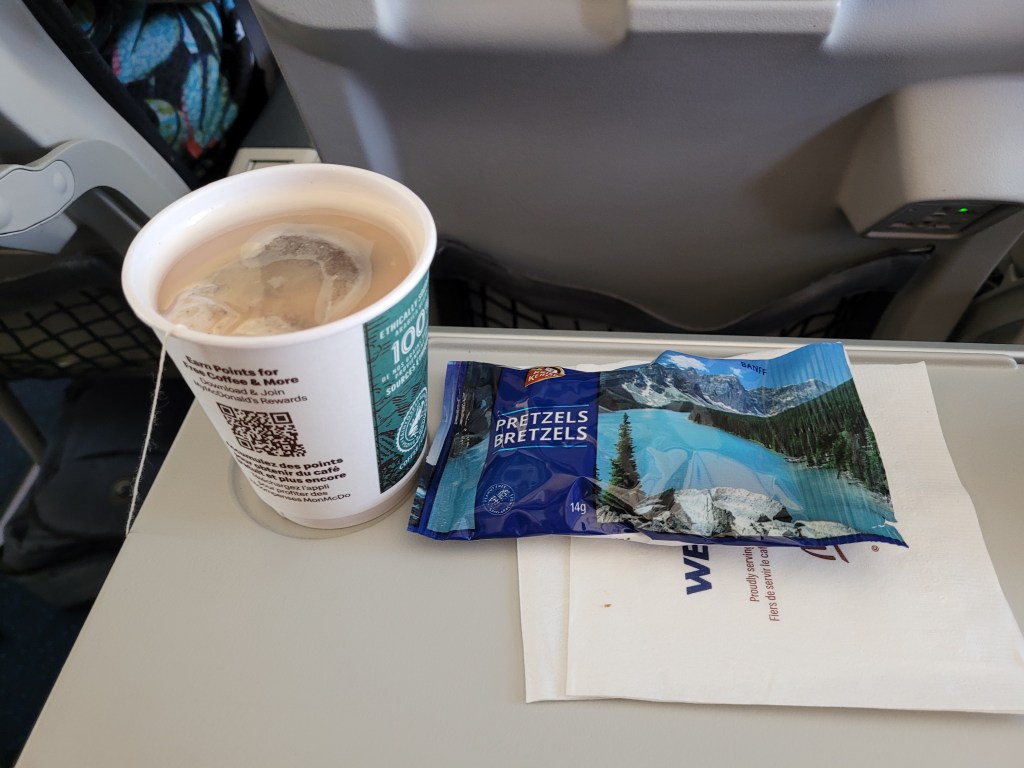
Everything on Flair is buy-on-board, not complaining, we knew, but be prepared and bring your own snacks and water or be ready to fork out some money for everything. Oddly, flying out of Victoria, we ended up settling for instant noodles and water, as they had run out of a lot of food onboard from the flight over from Ottawa.
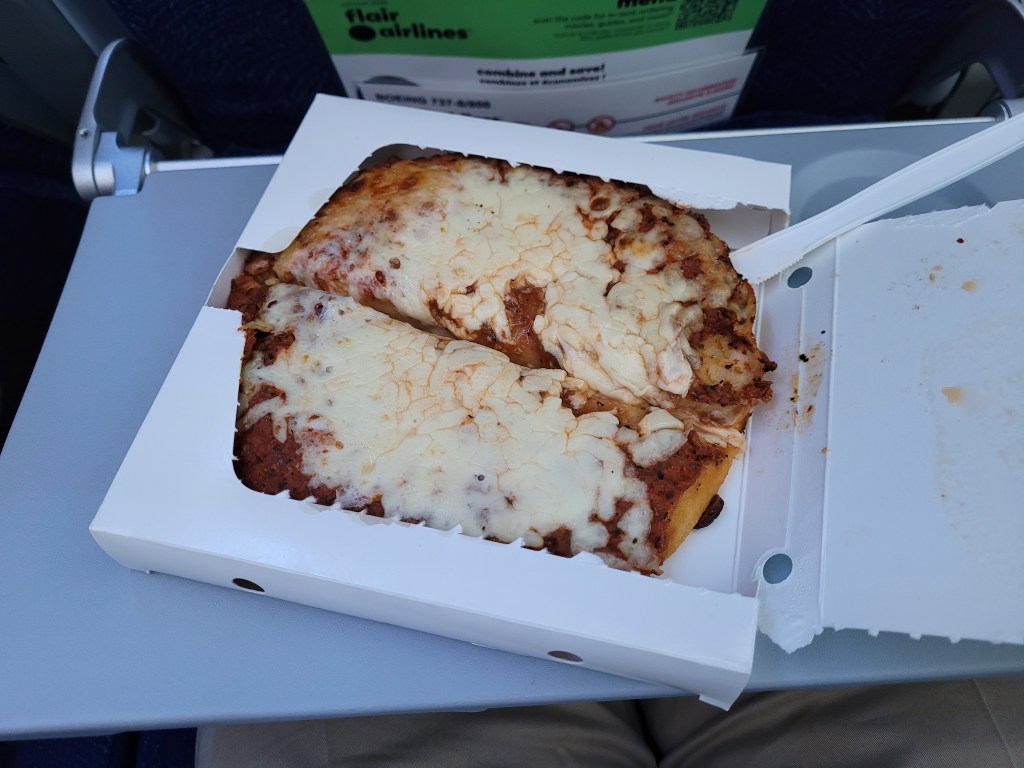
AC, like WS, also does a buy on board and free drink service. However, you don’t get a snack. One extra that AC offers which is a good concept is through the Air Canada bistro, you can buy leftover business class meals if you need something more substantial, act fast though as there are only so many extra meals.

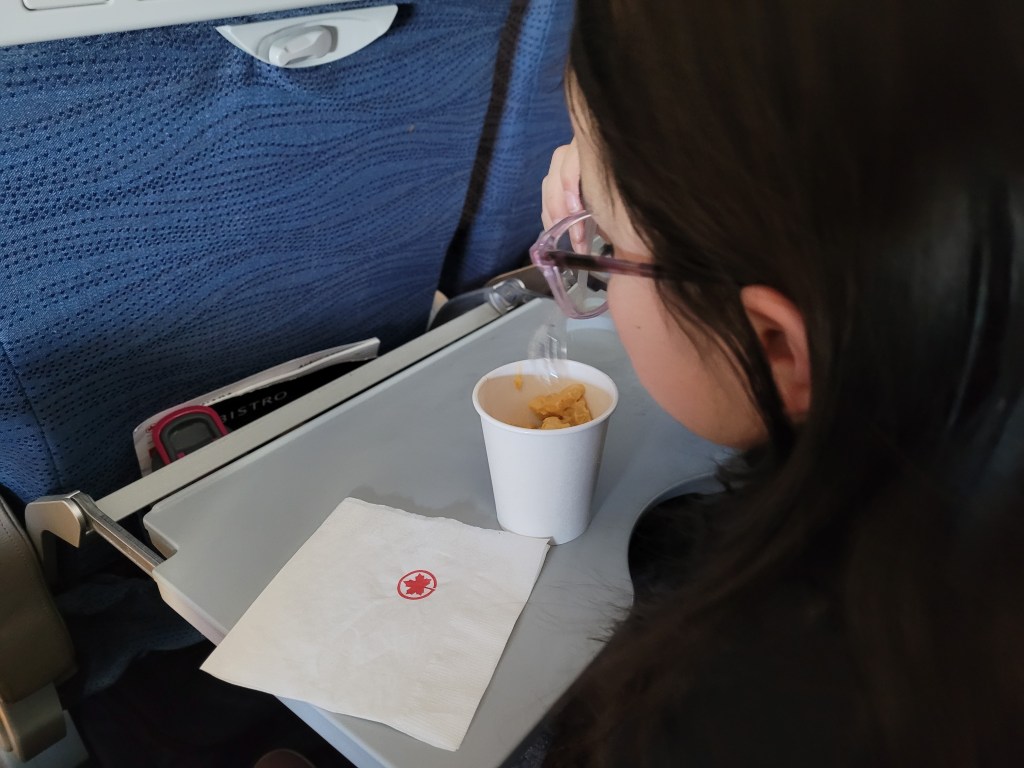
I’ll have to give this one to WestJet. I can usually survive on free beverages and pretzels/cookies along with whatever I brought onboard. As a full-service carrier, I find it incredibly cheap of AC to charge more and not even include a light snack with your fare.
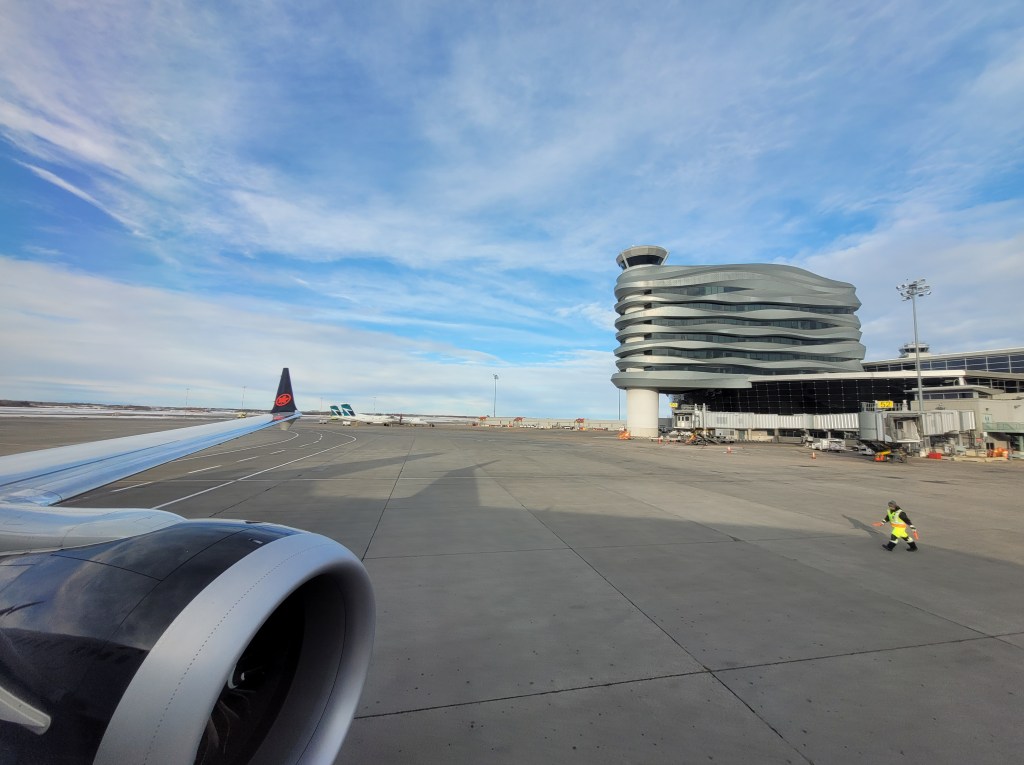
…And the winner is…!?
I’m going to have to give the crown to Air Canada here. Overall, the AC experience is the best on the 737 Max. The large overhead bins prevent the need for gate-checked bags, while the seatback IFE helps occupy your time. The cabins are just a hair less dense then WS, and more appealing in appearance and comfort.
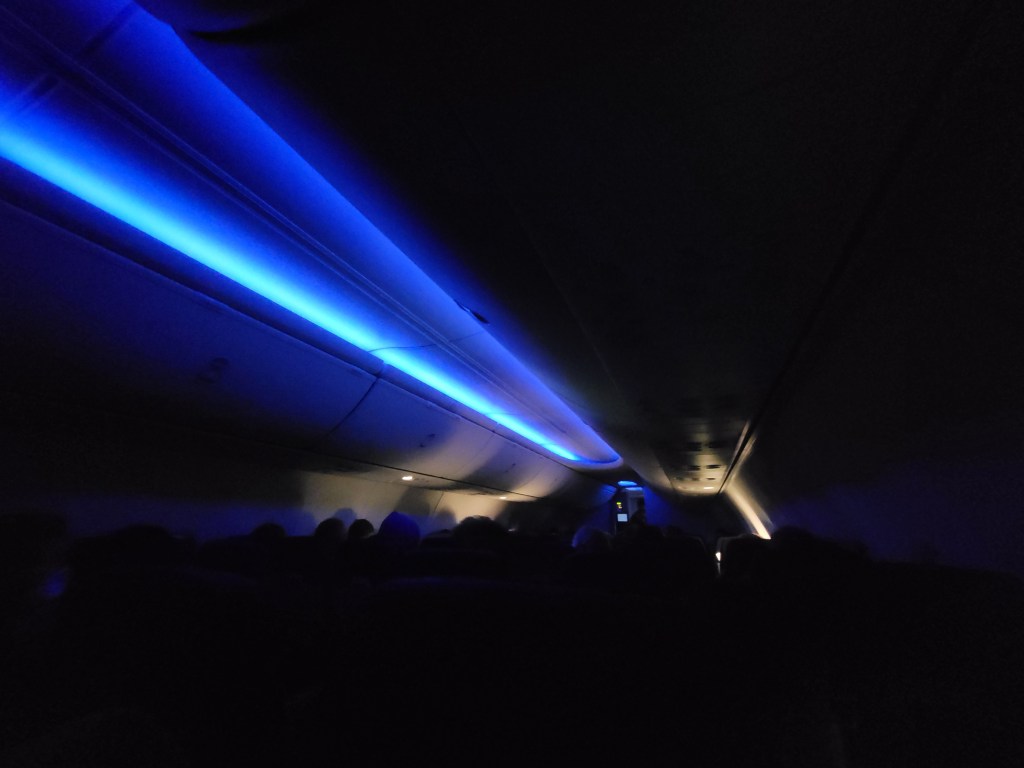
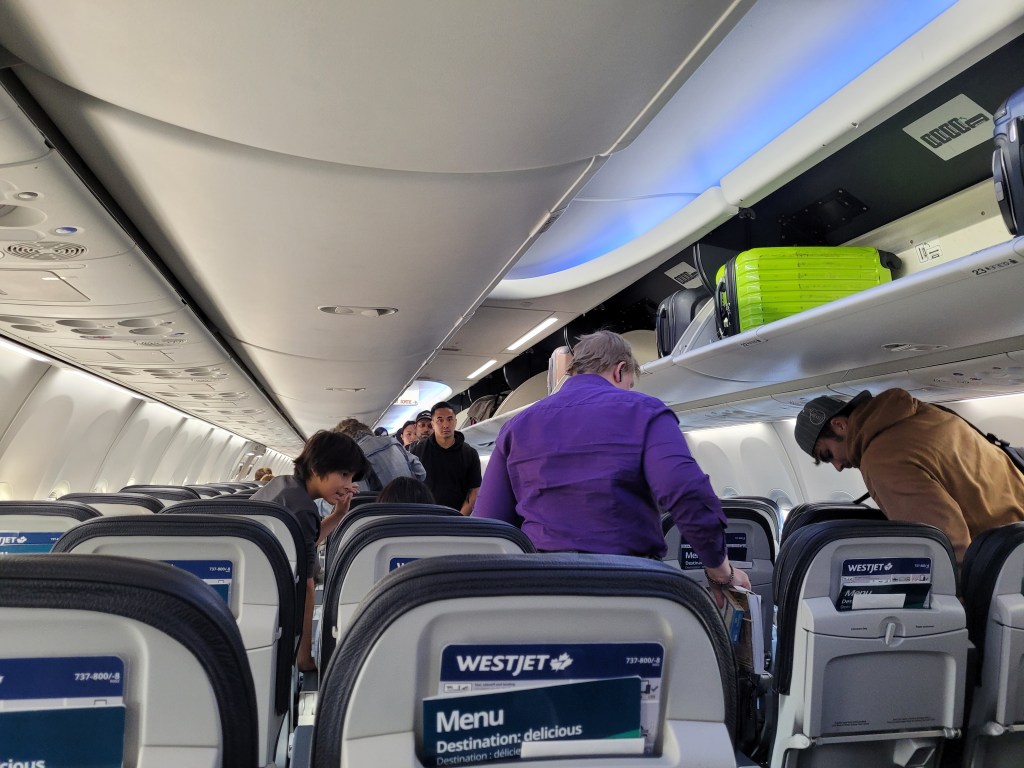
Closing Thoughts
Many were shocked that AC moved away from Airbus to replace the aging A320 series, and personally I also would have preferred to see AC fly the A320NEO series. However, I have enjoyed our flights on the Canadian 737 Max in service on all carriers. Ultimately, they’re all very similar and who you fly with will come down to price, personal preference, brand loyalty, and/or comfort.
I think I’ll have to do a ULCC 737 Max showdown between Lynx and Flair next time as I feel Flair had quite the disadvantage here. When going from the 737NG to a 737Max, you will definitely notice the better cabin comfort on the Max series, its quieter cabin and nicer amenities overall.
Have you flown on any of these airlines’ Max aircraft? Share your thoughts by leaving a comment.
Stay tuned for my next blog coming October 20th! This will be the first in a series covering our trip to the Caribbean and South America in Spring 2023.
